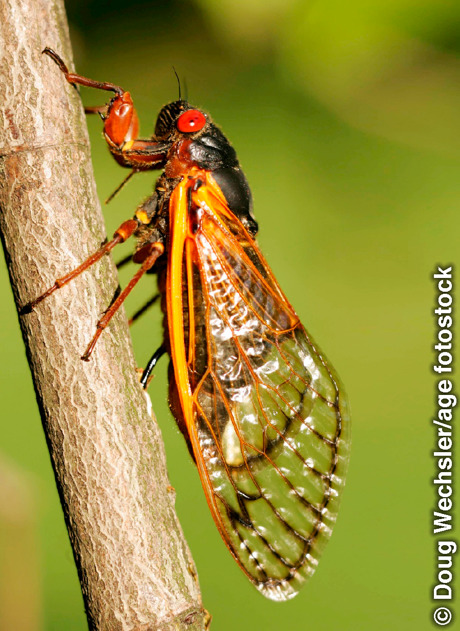CICADAS,
insects resembling locusts, live on all continents except Antarctica.
Unique to the northeast of America, however, are the periodical cicadas,
which have long fascinated biologists.

Consider: Millions
of periodical cicadas appear suddenly in the spring for just a few
weeks. During their short time in the sun, they shed their juvenile
skin, sing deafeningly, fly, reproduce, and then die. Strangely, the
next generation appears either 13 or 17 years later, depending on the
species. What happens to these insects in the meantime?
To
answer, we need to understand the periodical cicada’s unique life
cycle. About a week after appearing, adult insects mate and the females
lay from 400 to 600 eggs inside tree twigs. Soon thereafter, the adults
die. Within the next few weeks, the eggs hatch and the young nymphs drop
to the earth, burrow into the soil, and begin a life underground, where
they suck fluids from the roots of shrubs or trees for several years.
Either 13 or 17 years later, the new adult generation emerges to repeat
the cycle.
According to an article in Nature magazine,
the complex life cycle of these cicadas “has confounded scientists for
centuries. . . . Even now, entomologists are trying to understand how
the insects’ peculiar life cycles evolved.” It is an unprecedented
mystery in the animal kingdom.